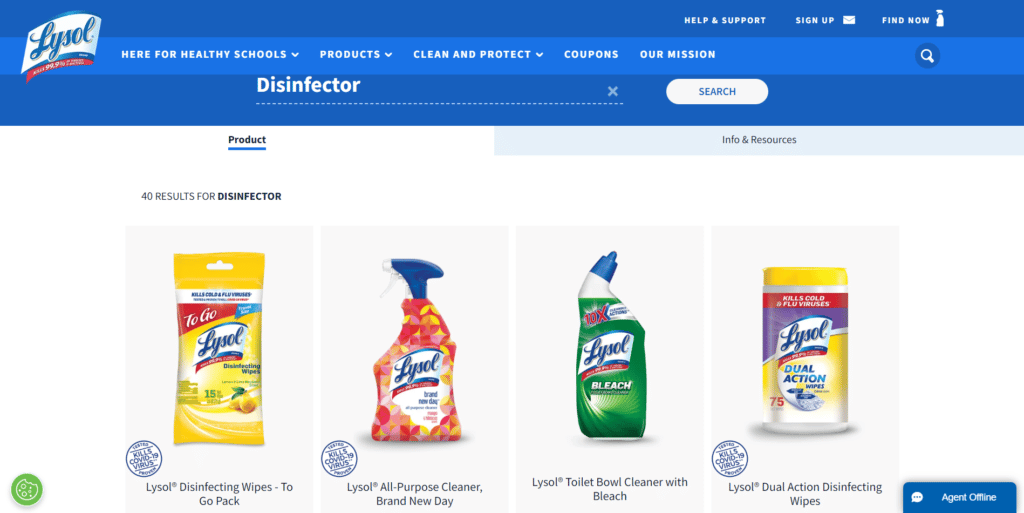In today’s interconnected world, e-commerce is not merely an option—it’s a strategic imperative. Every detail, from the layout to the functionalities, can be the difference between a fleeting visit and a loyal customer. But among these details, certain features stand out, acting as the linchpins of a successful e-commerce venture. Their importance? Immeasurable. They dictate the user’s journey, influence purchasing decisions, and, ultimately, determine the platform’s profitability. Recognizing and implementing these features is non-negotiable for industry stalwarts, emerging entrepreneurs, and businesses considering e-commerce. In this guide, we’ll dissect the ten must-have features for any e-commerce website, shedding light on their importance and how they contribute to a seamless, efficient, and engaging shopping experience. Let’s dive in.
Intelligent search: leveraging AI for content discovery
Going into 2024, AI will become a more integral part of site search solutions, transforming the way users interact with e-commerce platforms. Advanced solutions like AddSearch are leading this change, offering users a more efficient and user-friendly discovery process. This technology goes beyond traditional search methods, utilizing AI to understand user preferences and behavior, thereby facilitating a more personalized and efficient discovery process.
Research by G2 indicates that AI-powered personalization has significantly transformed e-commerce, offering a more individualized shopping experience. AI technologies, including machine learning and natural language processing, are now integral to site search solutions, enhancing the accuracy and relevance of search results and recommendations.
As e-commerce continues to evolve, incorporating AI-driven site search solutions like AddSearch is essential for staying ahead in a competitive market. This approach not only improves user experience but also contributes to higher engagement and conversion rates, making it a strategic investment for any e-commerce platform.
Mobile Optimization
In today’s digital age, the line between desktop and mobile browsing is increasingly blurring. With sales reaching $2.2 trillion in 2023 and accounting for 60% of all e-commerce sales globally, the significance of mobile optimization for e-commerce platforms is crystal clear. Yet, the journey can be challenging. A staggering 61 percent of users are unlikely to return to a mobile site they had trouble accessing,” and “40 percent visit a competitor’s site instead.
The modern consumer, equipped with a smartphone, expects a seamless shopping journey, irrespective of their device. Mobile optimization goes beyond just ensuring a site fits on a smaller screen. It’s about tailoring the entire shopping experience to the habits and preferences of mobile users. From crisp product images to streamlined checkout processes, every element should be designed with the mobile user in mind.
In the fiercely competitive e-commerce landscape, businesses can’t afford to overlook mobile optimization. It’s not just about keeping up with trends; it’s about capturing a vast and growing market segment, ensuring your platform is ready for today’s demands and tomorrow’s opportunities.
User-friendly navigation and UX: The cornerstone of e-commerce
User-friendly navigation and an intuitive user experience (UX) are more than just design elements; they are crucial drivers of e-commerce success. With online shoppers expecting seamless and efficient interactions, the importance of optimized navigation and UX cannot be overstated.
72% of online stores fall short of customer expectations when it comes to site search.
bigcommerce.com
Recent studies emphasize the impact of UX on consumer behavior. For instance, research by the Nielsen Norman Group shows that websites with intuitive navigation and easy-to-use interfaces see higher engagement rates and customer retention. This is particularly relevant in e-commerce, where the ease of finding products directly influences purchasing decisions.
Key trends in navigation and UX for 2024 include:
- Simplified Menus: Clarity and ease of use are paramount. Drop-down and mega menus that categorize products effectively can significantly enhance the user experience.
- Advanced Search Filters: Enabling users to refine their search quickly with multiple filters is essential for a smooth shopping experience.
- Personalized User Journeys: Using AI and machine learning to personalize the browsing experience based on user behavior and preferences is becoming increasingly important.
- Accessibility and Inclusivity: Ensuring your website is accessible to all users, including those with disabilities, is not only a legal imperative but also expands your market reach.
The focus on user-friendly navigation and UX is not just about aesthetic appeal; it’s about creating an environment that caters to the user’s needs, preferences, and behaviors. This approach is vital for e-commerce platforms looking to thrive in the competitive online marketplace.
Secure payment gateways
As businesses, we ask customers to share sensitive financial information, and in return, they expect us to provide a proper level of security for that information. This is where secure payment gateways come into play.
A robust payment gateway ensures that every transaction, whether a major purchase or a minor add-on, is processed with the highest level of security. It’s not just about encrypting data; it’s about providing a platform where customers feel confident to make purchases without second-guessing their safety.
Offering multiple payment options, from credit cards to digital wallets, caters to a broader audience and meets varying customer preferences. But at the core of these options lies the unwavering promise of security. Every encrypted transaction, and every verified payment, reinforces the trust customers place in an e-commerce platform.
Product reviews and ratings
Today’s digital consumers palace more value on the opinion of a peer over that of brands. A study done by the Spiegel Research Center highlights this point, noting that products backed by reviews have a 270% higher likelihood of being purchased.
But it’s not just about numbers. Reviews provide real-world insights, offering prospective customers a glimpse into the experiences of others. They build trust, reduce purchase hesitations, and often highlight the unique selling points of a product. For businesses, these reviews offer invaluable feedback, pointing out strengths and areas for improvement.
Incorporating a robust review system on your e-commerce platform is more than just a feature—it’s a commitment to transparency, quality, and continuous improvement. By valuing and showcasing customer feedback, businesses not only foster trust but also drive engagement and conversions.
Detailed product descriptions and high-quality images
A well-crafted product description does more than just list features; it paints a vivid picture, highlighting the benefits and addressing potential queries. It’s about conveying the value proposition, ensuring customers understand not just what the product is, but how it can enhance their lives or solve a problem.
Complementing these descriptions, high-quality images offer a visual representation, capturing the product from various angles and settings. They provide a closer look at textures, colors, and dimensions, allowing customers to visualize the product in their environment. For many online shoppers, seeing multiple clear images can be the deciding factor in purchasing.

Together, detailed descriptions and high-quality images create a holistic shopping experience. They reduce uncertainties, build confidence in the purchase decision, and ultimately drive conversions. In the world of e-commerce, they are the dynamic duo that brings products to life, ensuring customers are well-informed and confident in their choices.
Chatbots
Chatbots, powered by artificial intelligence, are designed to interact with users in real time, addressing common questions, guiding product searches, and even assisting with checkout processes. They operate around the clock, ensuring customer inquiries are addressed promptly, regardless of the time of day.
Beyond just answering questions, chatbots gather valuable data on user behavior and preferences. This data can be harnessed to refine marketing strategies, personalize shopping experiences, and enhance overall site usability.
For businesses, integrating chatbots into their e-commerce platforms is not just about streamlining customer service; it’s about optimizing the entire shopping experience. By providing immediate assistance and tailored responses, chatbots play a pivotal role in enhancing user engagement, building trust, and driving conversions.
Easy checkout process
An easy and streamlined checkout process is essential for retaining customer interest and ensuring successful transactions. It begins with a clear and concise cart review, allowing customers to easily add and modify their selections, apply discounts, or continue shopping. The next stages should be intuitive, guiding users through payment, shipping, and confirmation with minimal friction.
Multiple payment options, transparent shipping costs, and the option for guest checkout can further enhance the user experience. Security is paramount; customers must feel confident that their financial and personal information is protected.
Moreover, the process should be optimized for both desktop and mobile users, ensuring a seamless experience across devices.
Social media integration
The synergy between e-commerce and social media is undeniable in the digital age. For brands, integrating their social media presence with their website serves multiple purposes. It establishes trust by showcasing real customers who have endorsed the brand and fosters a community of loyal patrons.
By highlighting real-world uses of products through customer testimonials and shared experiences, brands can add a layer of authenticity to their online presence. This approach resonates with potential customers, showing how others benefit from the products and encouraging them to share their experiences on various social channels.
Integrating social media also helps streamline the user journey. Features like direct product sharing, reviews, and “Shop Now” buttons on platforms like Instagram or Facebook blur the lines between social browsing and online shopping. This seamless integration amplifies a brand’s reach, engagement, and credibility.
Conclusion
In the dynamic world of e-commerce, the path to success is paved with innovation, user-centric design, and strategic integration. Each feature plays a pivotal role in shaping the customer journey, from the foundational importance of secure payment gateways to the nuanced touch of personalized user experiences. As the digital marketplace continues to evolve, businesses must stay ahead by continuously refining their platforms, ensuring they not only meet but exceed customer expectations. A successful e-commerce website seamlessly blends functionality with user experience, creating an environment where customers feel valued, understood, and eager to return.
Experience the Best in Search Solutions with AddSearch – Top Rated on SourceForge! Click for Your Free, Personalized Demo Now.





